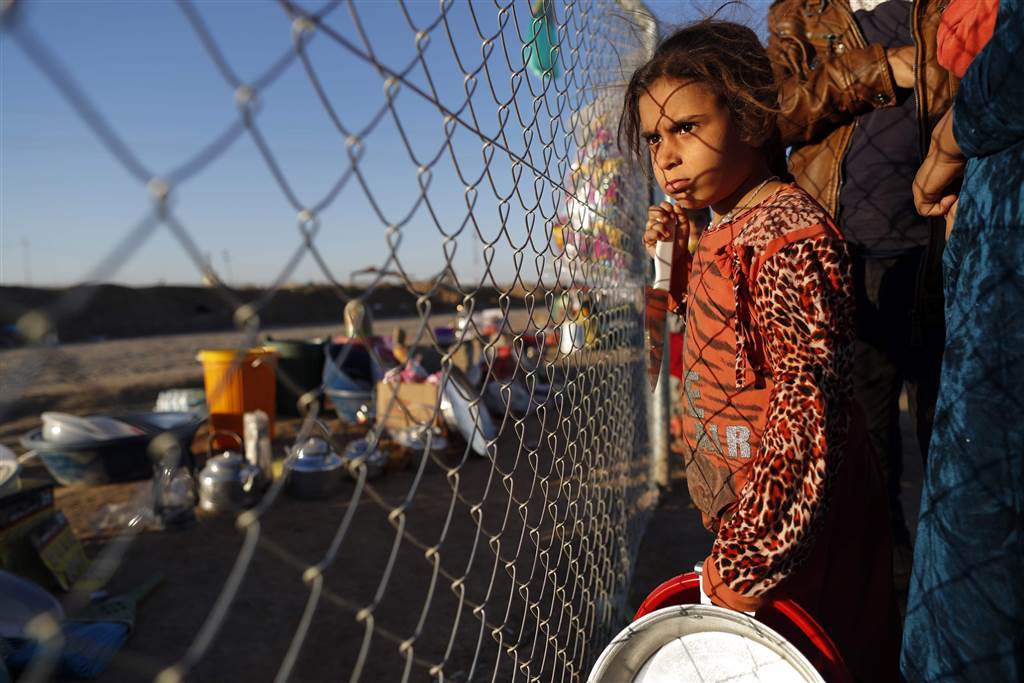London – U.N. announced that 68,000 citizens have fled their homes since Iraqi forces began a huge offensive against ISIS in Mosul last month.
The number has significantly increased over the past week as Iraqi forces entered densely populated city. Yet, the numbers didn’t reach the offensive predictions.
United Nations’ Office for the Coordination of Humanitarian Affairs (OCHA) said in a statement that 68,550 people are currently displaced and in need of urgent humanitarian assistance. The number doesn’t include the thousands besieged in towns around Mosul and who forced to accompany ISIS to be used as human shields.
Prior to the launch of the operation, international reports predicted there are over million civilians living inside Mosul, Iraq’s second city and ISIS’ last major stronghold in Iraq.
OCHA said the aid response to the offensive launched against the jihadists on October 17 was growing in complexity, with varying needs for different categories of civilians.
“Humanitarian needs are severe among displaced families in and out of camps, vulnerable residents of retaken communities, and people fleeing the intense fighting in Mosul city,” the statement added.
Meanwhile, U.S.-led coalition announced it bombed a key bridge in central Mosul, where Iraqi forces are launching an offensive to retrieve the city from ISIS control.
U.S.-led coalition aircraft carried out an air strike on Mosul’s “third bridge”, leaving one of the five bridges in the center of the city, which was built by the British.
Coalition spokesman Colonel John Dorrian said: “ISIS militants have been using the bridges to re-supply the eastern side of the city, essentially rotating their forces”.
“We’re not going to let that happen,” he added.
Vice president of Nineveh Provincial Council Noureddine Kabalan said all other bridges over Tigris River have been destroyed except the old iron bridge.
Most of ISIS’ strongholds are on the western side of Mosul, where the old city is with narrow streets making it hard for government forces’ armored vehicles to penetrate.
International Organization for Migration (IOM) spokeswoman said the organization is concerned that the lack of bridges could further trap civilians, who ISIS uses as human shields.
In related matter, a large group of displaced families fled the city towards Kokjali on the outskirts of Mosul on Tuesday.
Reuters reported that the families, including dozens of children: “carried their belongings and waved white flags as they walked towards the district, under the control of Iraqi government forces.”
The campaign to recapture Mosul started on Oct. 17, with air and ground support from a U.S.-led coalition.
Iraq’s Foreign Minister Ibrahim al-Jaafari said during a visit to Hungary on Tuesday that 62,000 refugees have left the city which is much fewer than authorities expected. He added: “Iraq is prepared to receive many more.”
U.N. had initially predicted that 200,000 civilians would be forced to leave their homes in the first few weeks of Iraq’s biggest military operation in years.
Iraqi forces have been sending message to civilians in Mosul that they should stay at home and not try to flee through the front lines, and many residents have indeed stayed in their homes as Iraqi forces engaged in fierce street battles with ISIS militants.
Reports indicated that Popular Mobilization Forces (PMF) militias had executed several violations towards civilians in areas close to Mosul.
Earlier this month, U.N. indicated that it received reports saying ISIS militants are forcing thousands of civilians to return to Mosul to be used as human shields.
“While Mosul is under ongoing heavy attack, there are currently no safe routes out of the city,” Norwegian Refugee Council (NRC) spokeswoman Becky Bakr Abdulla told AFP.
“Civilians are facing an extremely difficult decision of either staying in their homes stuck in the crossfire or risk their lives in an attempt to find their way out of the city,” she added.
The limited number of displaced civilians from the city of Mosul has allowed aid organizations to keep up with those in need of shelter.
According to the U.N., the majority of the displaced are in camps, whose capacity is being increased daily and is expected to reach around half a million by mid-December.
Chief of Saladin’s Provincial Council Ahmed al-Jabouri, ask Prime Minister Haidar al-Abadi, security leaders, and PMF militias to allow the return of civilians to their liberated areas.
In his statement, Jabouri said that most recaptured cities are now safe. He asked PMF militias and security forces to take into consideration the struggles of displaced civilians especially the children during winter.
PMF militias are refusing the return of residents despite the fact that over two years have passed since ISIS militants have left the areas. Many believe that the rejection is due to sectarian resons even though most towns are destroyed and need to be rebuilt.
